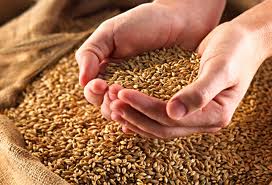Grain prices to remain favourable for ag investors

World grains production is to grow by more than 260 million tonnes over the next five years, but will that be enough to keep up with demand, supporting prices and leaving conditions „largely favourable for agricultural investment”.
The International Grains Council, in its forecast for world harvests next year, foresaw wheat production rising by 5.4 percent to 690 million bushels, and continuing to grow thereafter. A rise in output at that pace would be ahead of the 2.2 percent rise in sowings the council has forecast, signalling a recovery in yields from weather-dented levels in producing areas such as the EU and former Soviet Union.
For corn, global production will jump to a record 916 million tonnes in 2013-14, up 10.4 percent from this year, when drought depleted harvests in the US and South America. Corn output will continue to increase, by an average of 1.7 percent a year, to 2017-18, slightly ahead of increases in wheat and, indeed, barley harvests. However, consumption will, after a relatively slow 2013-14, settle down to even faster annual expansion, thanks to „strong growth in demand for feed use”.
The boost will further decline to 16 percent in the stocks-to-use ratio for grains at the end of 2017-18, compared with 18 percent forecast at the close of 2013-14. For wheat, the ratio will drop from 25 percent to 23 percent, and for corn from 15 percent to 8 percent. The stocks-to-use ratio is a key pricing metric, indicating the tightness of supplies, and thereby the competition between buyers to acquire them. „The tighter outlook will leave markets more vulnerable to price gains, as well as volatility, in the event of poor crops,” the IGC said.
A similar picture will be evident in oilseeds, for which prices „are expected to be supported by further increases in demand for edible oils, particularly in Asia”. For soybeans, world production will recover by 8.5% to 141 million tonnes next season, before beginning increases at expected at a pace of 1.6%, narrowly behind consumption. The oilseeds’ stocks-to-use ratio will stay at 12 percent both next season and in 2017-18. „Oilseed consumption is expected to grow particularly strongly, by 2.6 percent per annum, predominately led by the crushing industry and ultimately the expansion in animal feed use that is driving demand for corn,” the IGC said. „Grain and oilseed prices are predicted to remain largely favourable for agricultural investment, underpinned by structural growth in demand for animal feed in particular, together with rising energy prices.”











Vélemény, hozzászólás?
Hozzászólás küldéséhez be kell jelentkezni.